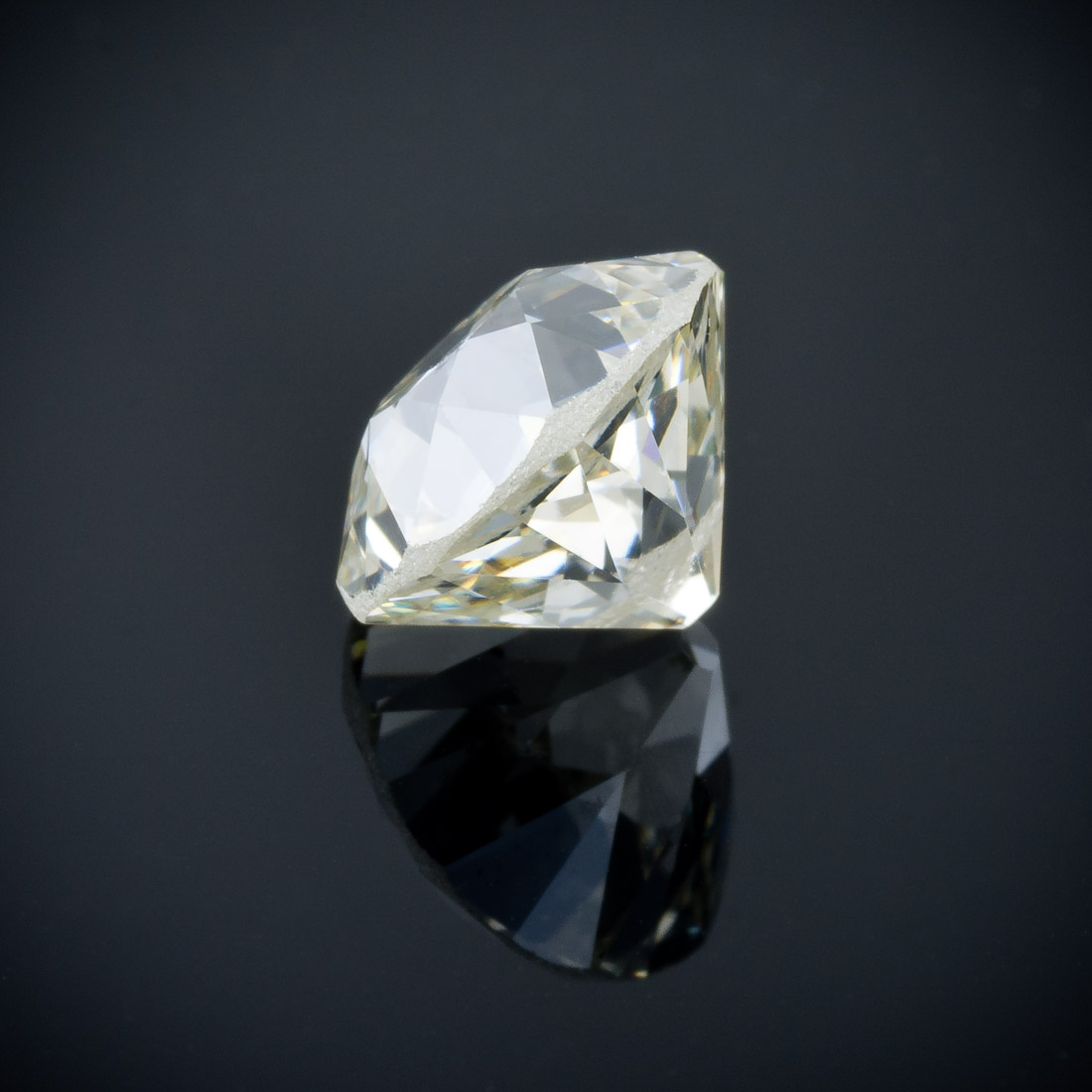
As you may already know, a diamond's weight is measured in carats, and typically, the higher the number of carats, the more expensive the diamond. However, it's worth noting that carats only refer to a diamond's weight, not its size. Additionally, since each diamond is unique, carat weight is just one of the many factors that contribute to a diamond's overall value.


The clarity of a diamond can be influenced by its shape and size. Although clarity is generally considered less crucial than a diamond's cut or color, it becomes more significant when purchasing a diamond larger than one carat or specific fancy-shaped diamonds like emerald or Asscher cuts, where imperfections may be more noticeable. In such cases, investing in a higher clarity grade may be a wise choice to enhance the diamond's overall appearance.
When it comes to diamond color, it is evaluated on a scale ranging from D to Z. A diamond with a D rating is considered flawless and colorless, while a diamond with a Z rating tends to have a slight yellowish tint. Although the D-Z scale is widely used, it's worth noting that in longer diamond shapes such as oval and radiant, color variations can be more noticeable. Nevertheless, it's important to keep in mind that diamond color is mainly a matter of personal preference and doesn't necessarily reflect the diamond's quality.

The shape and size of a diamond can impact its clarity. While clarity is generally of lesser importance compared to a diamond's cut or color, it becomes more significant when purchasing a diamond larger than one carat or when considering specific fancy-shaped diamonds, such as emerald or Asscher cuts, where imperfections are more noticeable. In such cases, it may be advisable to invest in a higher clarity grade to enhance the overall visual appeal of the diamond.
Clarity is a crucial factor to consider when evaluating diamonds. It refers to the presence of internal or external flaws that can be detected under magnification. These imperfections, which may include natural marks, feathers, pinpoints, and clouds, are generally regarded as undesirable since they can detract from the diamond's overall beauty and brilliance.

.webp)
Clarity in diamonds can be influenced by their shape and size. While clarity is generally considered less critical than a diamond's cut or color, it gains importance when purchasing a diamond larger than one carat or when considering specific fancy-shaped diamonds like emerald or Asscher cuts, where flaws are more noticeable. In such instances, it's advisable to consider a higher clarity grade, which may require a higher budget, to enhance the diamond's visual appeal.
The cut of a diamond significantly influences its beauty and brilliance, regardless of its shape. Cut quality is assessed based on factors like symmetry, polish, angles, and proportion ratios. Unlike some other diamond aspects, cut grading is subjective, as there are no universally accepted standards for vendors to follow. For round diamonds, cut control through precise polishing techniques is relatively straightforward, making cut grading less critical. However, irregularities in cutting can have a more pronounced impact on other diamond shapes, especially fancy cuts with intricate faceting patterns.
The cut of a diamond significantly influences its beauty and brilliance, regardless of its shape. Cut quality is assessed based on factors like symmetry, polish, angles, and proportion ratios. Unlike some other diamond aspects, cut grading is subjective, as there are no universally accepted standards for vendors to follow. For round diamonds, cut control through precise polishing techniques is relatively straightforward, making cut grading less critical. However, irregularities in cutting can have a more pronounced impact on other diamond shapes, especially fancy cuts with intricate faceting patterns.
Edit
I completely agree with the statement. The cut of a diamond plays a huge role in determining its beauty and brilliance, regardless of the shape. Cut quality is evaluated based on various factors such as symmetry, polish, angles, and proportion ratios. However, unlike some other diamond aspects, cut grading is subjective, as there are no universally accepted standards for vendors to follow. While cut control through precise polishing techniques is relatively straightforward for round diamonds, it becomes more critical for other diamond shapes, especially fancy cuts with intricate faceting patterns, where even slight irregularities in cutting can have a significant impact on the overall appearance of the diamond.
InsertRephrase
The cut of a diamond significantly influences its beauty and brilliance, regardless of its shape. Cut quality is assessed based on factors like symmetry, polish, angles, and proportion ratios. Unlike some other diamond aspects, cut grading is subjective, as there are no universally accepted standards for vendors to follow. For round diamonds, cut control through precise polishing techniques is relatively straightforward, making cut grading less critical. However, irregularities in cutting can have a more pronounced impact on other diamond shapes, especially fancy cuts with intricate faceting patterns.
I completely agree. The cut is one of the most crucial factors that determine the beauty and brilliance of a diamond, regardless of its shape. The quality of the cut is evaluated based on various parameters such as symmetry, polish, angles, and proportion ratios. However, the grading of the cut is subjective, as there are no universal standards that vendors must follow. For round diamonds, precise polishing techniques can control the cut quality relatively easily. As a result, cut grading is not as critical for round diamonds as it is for other shapes. However, for fancy cuts with intricate faceting patterns, irregularities in cutting can have a more significant impact on the diamond's overall appearance.


The clarity of a diamond can be influenced by its shape and size. While clarity is generally considered less critical than a diamond's cut or color, it becomes more significant when purchasing a diamond larger than one carat or when considering specific fancy-shaped diamonds like emerald or Asscher cuts, where imperfections are more conspicuous. In such cases, it's advisable to consider a higher clarity grade, even if it entails a higher cost, to enhance the overall visual appeal of the diamond.